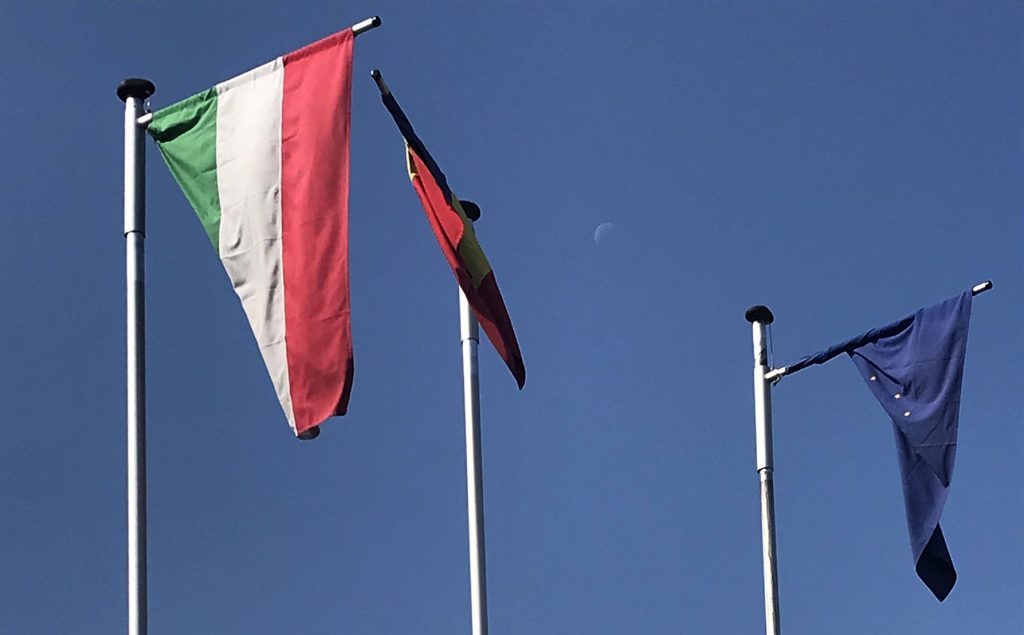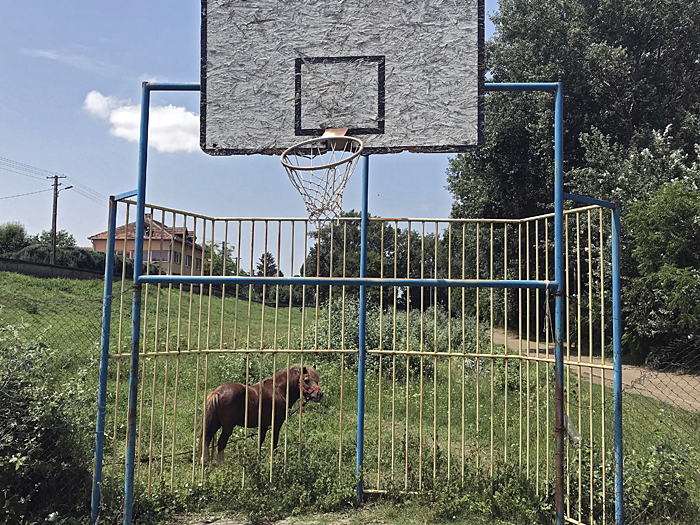Text: Mugur Grosu
One morning, in a hotel room in the Transylvanian city of Arad, I woke up with hammering headache and two extra bodies in my bed, naked and reeking of beer. And the first thing that came to my mind was the question: What is a pink hippopomingo?
As a rule, I say that the answer renders the question moot (some questions are more precious than the answers – especially if they are hasty), but I will do this formality: a pink hippopomingo is a crossbreed between a hippopotamus and a pink flamingo. Imagine: a three-ton smooth balloon supported by two puny ballerina legs, continued with a long neck, on top of which wobbles a smaller blob, with two bulbous eyes staring at you. All pink.
No connection whatsoever to the bodies found in bed – they belonged to two Transylvanian writers, attending, like myself, the Secret Discussion Festival, who had imbibed in conversation on the hotel terrace until the night had become day and I, the guest, became an inadvertent host. Sh!t happens, as they say. I worried, though, that the lack of sleep and my throbbing headache were draining my head just when I should have been in shape for an “artist talk” with Serbian director Boris Mitic, about his fantastic parody/documentary film In Praise of Nothing. I went out to breathe the morning air in the park across the street, and I immediately realized where that stupid question had come from. The day before, I had had been intrigued by the place – an empty square that placed face to face two obviously clashing monuments: a slender classical one, over a century old, with some kind of goddess on top waving a crown to the great wide open, and the other – a massive telluric ensemble that seemed to hail from communist times: a sort of triumphal arch on which there had been slammed, like giant fridge magnets, chunky bronze creatures, while under the arch there was a crowd that reminded me of the ”market hawks” – those who were the first to queue in for food during communist years, when they smelled fresh meat about to hit the market. The only thing missing were the plastic bags. Between these grumpy ensembles resembling two boxers obliged to dance in Swan Lake, the flags of Hungary, Romania and the European Union were swaying on three masts. In fact, ours was taking the French leave, having been twisted by the wind at the top of the mast, where it purred like the cat on the window sill, not caring at all that it was spoiling the fluttering ballet. The monuments were also mismatched: if the classical one had a couple of memorial wreaths on which you could see the Hungarian flag, the other one, further assuming the aspect of the food queue, still seemed to be waiting for fresh stock. There was something there, in that square, solemn and deserted, a heartbreaking colossal struggle that my troubled mind had managed to encompass only through this expression: a pink hippopomingo!

Later that evening, after having carried out decently during the meeting with Boris Mitic, I was heading to the hotel, and thought I’d offer myself some quiet moments in that square, which was starting to grow on me. Along the way, I stopped at a convenience store, where I came across friend Boris – roaming the candy and chocolate aisle, having a late night craving for his sweet tooth. He finally gave up, I told him where I was headed to, and I suggested him to accompany me, maybe get a couple of beers, but he said he had something better, a bottle of raspberry moonshine from back home, and I smiled: everything seemed to be pink these days. Instead of candy and chocolate, we bought a bag of pumpkin seeds. We took a wrong turn, and found ourselves wondering in a peaceful neighbourhood that fascinated him – not a soul in the streets, not a sound, nor a grain of light, like a movie set before action. Passionate about places, Boris did not even stay at a hotel, having preferred an Airbnb private abode, and had found some monumental kitsch – ‘I think the bed is 20 square meters’, he told me. We spent half an hour in the empty square, admiring the insects that danced in the light aura of the monuments, the only living creatures attracted to them. He was carefully aligning the seed hulls on the edge of the bench as if he were weaving lace and I told him what I had read in the meantime about that area, called Reconciliation Park: it had been inaugurated in 2004, following the French-German model, by putting back up the Hungarian monument, which had been dismantled following the Union of Transylvania with Romania in 1918, and adding a Romanian monument, about which I was amazed to find out that it had been done by today’s inexhaustible official sculptor Bolborea. As for the Hungarian monument, I had learned that the figures of the martyrs commemorated on its 13 effigies were not only Hungarians, but also Germans, Armenians, Croats and even Serbs, dear Boris. You know, as a result of the suppression of their revolution, many Hungarians refrained from cheering and raising beer glasses, as the winners did, and this abstinence, which lasted about 150 years, was perhaps their true monument, powerful and alive. As perhaps the simplest and liveliest monument of reconciliation is to tip the glass to the other, looking him in the eyes, no matter what world or camp he may come from. We sipped the raspberry moonshine, carefully gathered the seed hulls, and as we were leaving, then we heard the sprinklers behind us. In that pink humming of the – yet again – deserted square, it seemed as if history had opened a bottle of champagne, and it was sharing it with the grass blades.


